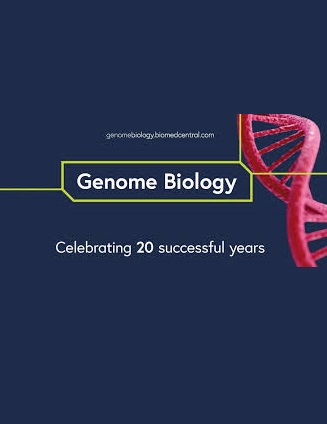Epigenomic identification of vernalization cis-regulatory elements in winter wheat
IF 10.1
1区 生物学
Q1 BIOTECHNOLOGY & APPLIED MICROBIOLOGY
引用次数: 0
Abstract
Winter wheat undergoes vernalization, a process activated by prolonged exposure to low temperatures. During this phase, flowering signals are generated and transported to the apical meristems, stimulating the transition to the inflorescence meristem while inhibiting tiller bud elongation. Although some vernalization genes have been identified, the key cis-regulatory elements and precise mechanisms governing this process in wheat remain largely unknown. In this study, we construct extensive epigenomic and transcriptomic profiling across multiple tissues—leaf, axillary bud, and shoot apex—during the vernalization of winter wheat. Epigenetic modifications play a crucial role in eliciting tissue-specific responses and sub-genome-divergent expressions during vernalization. Notably, we observe that H3K27me3 primarily regulates vernalization-induced genes and has limited influence on vernalization-repressed genes. The integration of these datasets enables the identification of 10,600 putative vernalization-related regulatory elements including distal accessible chromatin regions (ACRs) situated 30Kb upstream of VRN3, contributing to the construction of a comprehensive regulatory network. Furthermore, we discover that TaSPL7/15, integral components of the aging-related flowering pathway, interact with the VRN1 promoter and VRN3 distal regulatory elements. These interactions finely regulate their expressions, consequently impacting the vernalization process and flowering. Our study offers critical insights into wheat vernalization’s epigenomic dynamics and identifies the putative regulatory elements crucial for developing wheat germplasm with varied vernalization characteristics. It also establishes a vernalization-related transcriptional network, and uncovers that TaSPL7/15 from the aging pathway participates in vernalization by directly binding to the VRN1 promoter and VRN3 distal regulatory elements.冬小麦春化顺式调控元件的表观基因组鉴定
冬小麦会经历春化过程,这是一个因长期暴露在低温下而激活的过程。在这一阶段,开花信号产生并传输到顶端分生组织,刺激向花序分生组织的过渡,同时抑制分蘖芽的伸长。虽然已经发现了一些春化基因,但小麦中控制这一过程的关键顺式调节元件和精确机制在很大程度上仍然未知。在这项研究中,我们构建了冬小麦春化过程中多个组织--叶片、腋芽和芽先端--的广泛表观基因组和转录组图谱。表观遗传修饰在春化过程中引起组织特异性反应和亚基因组差异表达方面发挥了关键作用。值得注意的是,我们观察到 H3K27me3 主要调控春化诱导基因,而对春化抑制基因的影响有限。整合这些数据集后,我们鉴定出了 10,600 个与春化相关的推定调控元件,包括位于 VRN3 上游 30Kb 的远端可访问染色质区域(ACR),有助于构建一个全面的调控网络。此外,我们还发现与衰老相关的开花途径的重要组成部分 TaSPL7/15 与 VRN1 启动子和 VRN3 远端调控元件相互作用。这些相互作用精细地调节了它们的表达,从而影响了春化过程和开花。我们的研究提供了对小麦春化表观基因组动态的重要见解,并确定了对开发具有不同春化特性的小麦种质至关重要的假定调控元件。研究还建立了一个与春化相关的转录网络,并发现衰老途径中的 TaSPL7/15 通过直接与 VRN1 启动子和 VRN3 远端调控元件结合参与春化。
本文章由计算机程序翻译,如有差异,请以英文原文为准。
求助全文
约1分钟内获得全文
求助全文
来源期刊

Genome Biology
Biochemistry, Genetics and Molecular Biology-Genetics
CiteScore
21.00
自引率
3.30%
发文量
241
审稿时长
2 months
期刊介绍:
Genome Biology stands as a premier platform for exceptional research across all domains of biology and biomedicine, explored through a genomic and post-genomic lens.
With an impressive impact factor of 12.3 (2022),* the journal secures its position as the 3rd-ranked research journal in the Genetics and Heredity category and the 2nd-ranked research journal in the Biotechnology and Applied Microbiology category by Thomson Reuters. Notably, Genome Biology holds the distinction of being the highest-ranked open-access journal in this category.
Our dedicated team of highly trained in-house Editors collaborates closely with our esteemed Editorial Board of international experts, ensuring the journal remains on the forefront of scientific advances and community standards. Regular engagement with researchers at conferences and institute visits underscores our commitment to staying abreast of the latest developments in the field.
 求助内容:
求助内容: 应助结果提醒方式:
应助结果提醒方式:


